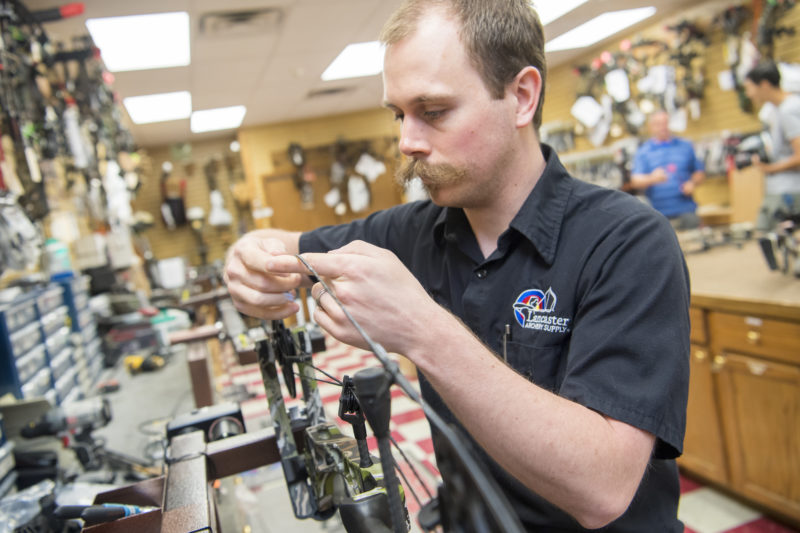You forgot to set the alarm clock and now you’re running late to work. You grab your coffee and rush out the door to your vehicle. You jam your keys into the ignition and slam the gear shift into reverse. The dashboard reads 7:42 a.m. If you don’t hit traffic, you should still make it on time.
You’re just about to sigh with relief when your vehicle stalls. “What now!?” Your eyes scan the dashboard, and just before reaching the clock you notice the oil-change light is on. “Uh-oh.” You’ve been putting off that duty for months, maybe years. Your negligence has caught up to you at the worst time.
Here’s another task you can’t neglect: changing the cables and bowstrings on your bow. That routine, yet important maintenance will extend the life of your equipment and improve your bow’s performance. But if you ignore the warning signs, you could give yourself an expensive headache. If you know what to look for, and properly care for your cables and bowstrings, your bow will perform at its peak indefinitely.

Bows need tune-ups too. Make sure your equipment is performance ready. Photo Credit: ATA
Much like your vehicle’s engine, bowstrings are your bow’s workhorse. When you draw your bow and release an arrow, the bowstrings transfer lots of energy from the bow’s limbs to your arrow, launching it downrange. After that launch, the bowstrings continue to oscillate. These tremendous energy transfers cause wear and tear over time. Properly maintained bowstrings should last up to three years. However, many factors affect the working life of cables and bowstrings.
If you shoot heavy draw weights, your bowstrings release even more energy, which inflicts more wear and tear on the strings. How often you shoot your bow also affects when your bowstring must be replaced. To extend a bowstring’s life, store your bow in a room with a consistent temperature.
Each time you pick up your bow, inspect its strings and cables before shooting. That’s an important safety measure. If the bowstrings look dry or fuzzy, wax them. Keeping bowstrings waxed prevents them from drying out and snapping. (Imagine the scare – and horror – if that happened while aiming at a big buck!) Bowstring wax is cheap, and it’s available at all archery shops. Apply the wax and rub it into the bowstring’s strands with your fingers.
If your bowstrings are frayed or look like they’re coming apart, you need a new string. Visit a pro shop and speak with a bow technician. Replacing cables and bowstrings is relatively easy for trained bow technicians. Ask the technician about string options. It’s fun to pick new colors and change your bow’s look.

Check the cables, sight, and other elements of your bow to make sure nothing else is misaligned. Photo Credit: ATA
After replacing the string, ask the bow technicians to reattach your D-loop, kisser button and peep sight. Shoot a few arrows before leaving the shop to ensure everything is working properly. New bowstrings have a break-in period of about 200 shots. After that, you might notice your bow shooting differently. Return to the bow shop for a final tuneup and timing inspection. Strings stretch over time and that might affect your bow’s timing.
Even if your original string looks fine, always pay attention to your bow’s performance. If you’re having issues with your bow for no obvious reason, take it to a pro shop for inspection. It might be time for a new string.
Don’t wait until the last minute to get new bowstrings and cables. Ordering a custom string might take a few days. Also, during the pro shop’s busy season, they might not be able to work on your bow for a few days. If you can’t hunt weekdays, and you need a new bowstring in the middle of the season, take your bow to the shop Monday so you’ll get it back before returning to your treestand that weekend.
If possible, plan ahead long before hunting season. If your bowstrings are a few years old, replace them well before the season when you take your bow in for a tuneup. That gives you plenty of time to break in new strings. Or try this: If you’re hanging up your bow for the season, replace the strings now so you’re ready next year. It never hurts to take in your bow for an end-of-season tuneup.